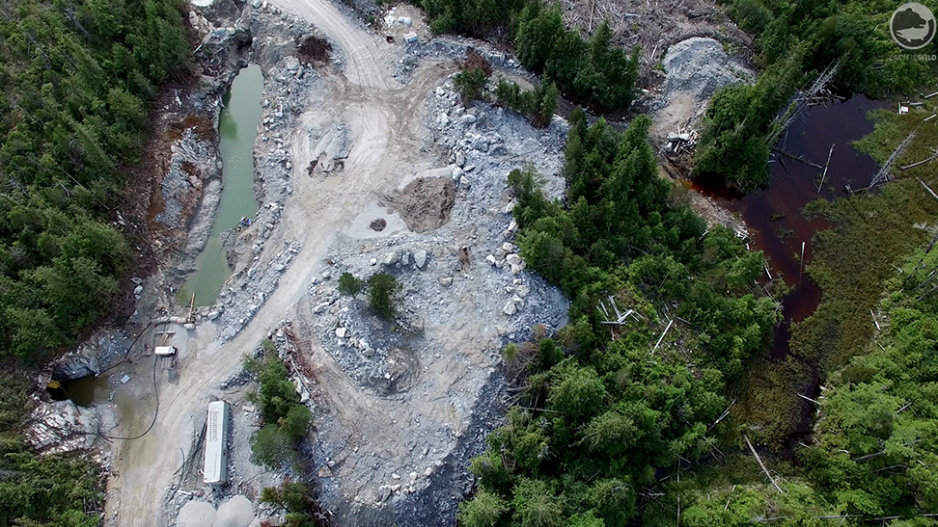Some existing mines or decommissioned mines that don’t have water treatment facilities may be required to build them, for example.
Teck Resources Ltd. (TSX:-TCK.B) recently spent $120 million to build a new water treatment plant for its Line Creek coal mine in the Elk Valley. A total of six are needed in the Elk Valley, according to auditor general Carol Bellringer’s report.
Mining companies may also need to pony up more in sureties for new mines in order to cover an estimated $1 billion unfunded liability for post-mine reclamation.
There are 13 major coal and metal mines operating in B.C. But there are some 160 mines that are either temporarily or permanently shut down. Of the existing operating or idled mines, 14 have water treatment facilities.
Bellringer estimates another 12 will be needed to address water quality issues in places such as Elk Valley, where a century of coal mining has left a legacy of high selenium levels.
Taxpayers could be on the hook for $1 billion in unfunded liabilities for some of these mines, the auditor general estimates.
One recent example of taxpayers potentially being stuck with a cleanup bill is the Banks Island Gold Ltd.(TSX-V:BOZ.H) Tel gold mine on Banks Island. In August 2015, the mine was shut down for unauthorized discharges of effluent and a number of mine permit violations.
The illegal discharge of effluent was discovered by the Ministry of Energy and Mines only after someone working at the mine blew the whistle on the company, underscoring one other concern Bellringer raised in her report: a lack of enforcement and monitoring by the ministries of Environment and Energy and Mines.
In January, Banks Island Gold filed for bankruptcy, and now taxpayers may be obligated to pay remediation.
Clifford White, chief councillor for the Gitxaala Nation, said the company has left behind an environmental liability that is not covered by the security it put up.
He said the cost of remediation is estimated at $1 million, but that the security Banks Island Gold put up was just $350,000.
“The amount of insurance that Banks Island Gold has will definitely not cover what the cleanup is,” White told Business in Vancouver. “As a result of that, we are negotiating with the province to make sure that is completely done. What will be left over is about $650,000, or something like that.”
The Ministry of Energy and Mines could not confirm that the remediation will cost $1 million, but confirmed that the security it holds from Banks Island Gold is $420,000, not $350,000. (There are two permits, with securities of $355,000 and $65,000.)
White said the Gitxaala Nation has made it clear it does not want the mine restarted.
One of the 16 recommendations made by the auditor general is that the long-term liabilities for mine reclamation be accurately calculated and that a sufficient amount of security be required from mine companies.
In response to the auditor general’s audit of compliance and enforcement, Energy and Mines Minister Bill Bennett said he accepted all but one of the auditor general’s 16 recommendations. That’s in addition to the dozens of recommendations that came out of a review of the Mount Polley mine disaster.
“We agree with the central opinion that is expressed in this report that our compliance and enforcement regime, at least in the Ministry of Energy and Mines, in terms of our legislation and our policy and the oversight of engineers, is in need of significant improvement,” Bennett said.
However, Bennett is balking at the recommendation to create a compliance and enforcement unit that would operate independently of the Mines Ministry.
Recommendations to raise water discharge fees could also increase mining costs.
Karina Briño, CEO of the Mining Association of British Columbia, said she is not nearly as concerned about the extra costs associated with implementing Bellringer’s recommendations as she is about the cost of carbon taxes and soaring electricity prices.
Both are starting to put B.C. at a disadvantage, compared with other mining jurisdictions such as Australia and Chile.
Power rates for industrial customers in the province spiked 9% in 2015 and will rise another 16.5% over the next four years. For mines, pulp mills, cement plants and other heavy power users, the increases are significant.
For example, Teck’s Highland Valley Copper mine spends north of $30 million a year on electricity. Mount Polley’s monthly power bill is around $1.5 million.
“When we compare ourselves to other jurisdictions, the cost of doing business in B.C. has gone up,” Briño said. “We don’t want to lose that advantage of low power rates, etc.
“When it comes to safety, which is really what we’re talking about, when the auditor general is talking about compliance and enforcement and all of the measures that need to be put into place, there is no compromise for the industry when it comes to safety.”




